Safe and Sound: A Comprehensive Guide to Fire Safety in Your Home
This article is not exactly focused on just the garage, but I thought it would tie in nicely with the other 2 articles I wrote about: Flammables Storage and Chemicals storage in the home. Between the three posts, a home fire safety plan should be set up to prevent almost anything from starting in your home and at the very least be prepared to take action should the worst happen…
**This article has a TON of valuable links to both The National Fire Protection Association (NFPA), and the U.S. Fire Administration. You will find them helpful and some are printable PDFs.
The Importance of Fire Safety in the Home: The Stats
According to the National Fire Protection Association (NFPA), U.S. fire departments respond to an average of 343,100 home structure fires each year. These fires result in approximately 2,610 civilian deaths, 11,090 civilian injuries, and $7.6 billion in direct property damage.
A closer look at statistics highlights just how critical fire safety is for homeowners and their families. Here are some key facts about home fires:
– Cooking equipment is responsible for almost half (49%) of all reported home fires.
– The leading factor contributing to home heating fires was failure to clean equipment, such as chimneys.
– Most fatal fires happen at night when people are asleep.
– Home fires spread rapidly. It only takes minutes for a small flame or source of heat to turn into a major blaze.
We will discuss some best practices that you can adopt today towards preventing these dangerous incidences from occurring in your home or apartment building and be prepared to use them if one does!
5 Top Sources of Fires in the Home
Cooking:
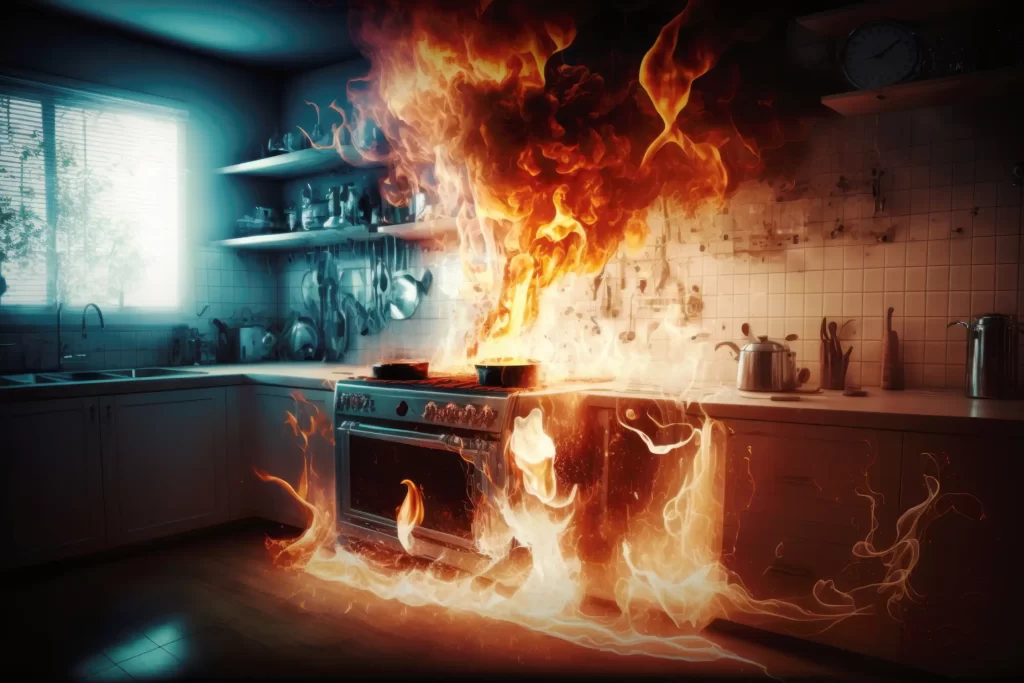
When we cook, we deal with high temperatures, open flames, and flammable oils, creating an environment ripe for accidents. Unattended cooking is the primary culprit behind these incidents. Leaving a pot on the stove while stepping away, even for a moment, can lead to a rapid spread of fire, especially when cooking at high temperatures or deep frying.
Cluttered cooking spaces can also increase fire risk. A kitchen towel, paper towel roll, or even food packaging left too close to a hot burner can quickly catch fire. Similarly, loose clothing can accidentally catch fire from an open flame on the stove.
Position your barbecue grills at least 10 feet away from your house, including siding, deck railings, and even those tree branches that hang overhead.
Prevent cooking fires: never leave cooking food unattended. Ensure your cooking area is clean and free of flammable materials. Keep a fire extinguisher in the kitchen and know how to use it. Regularly check your appliances for any malfunction and wear oven mitts or use pot holders while handling hot pots and pans.
Heating:
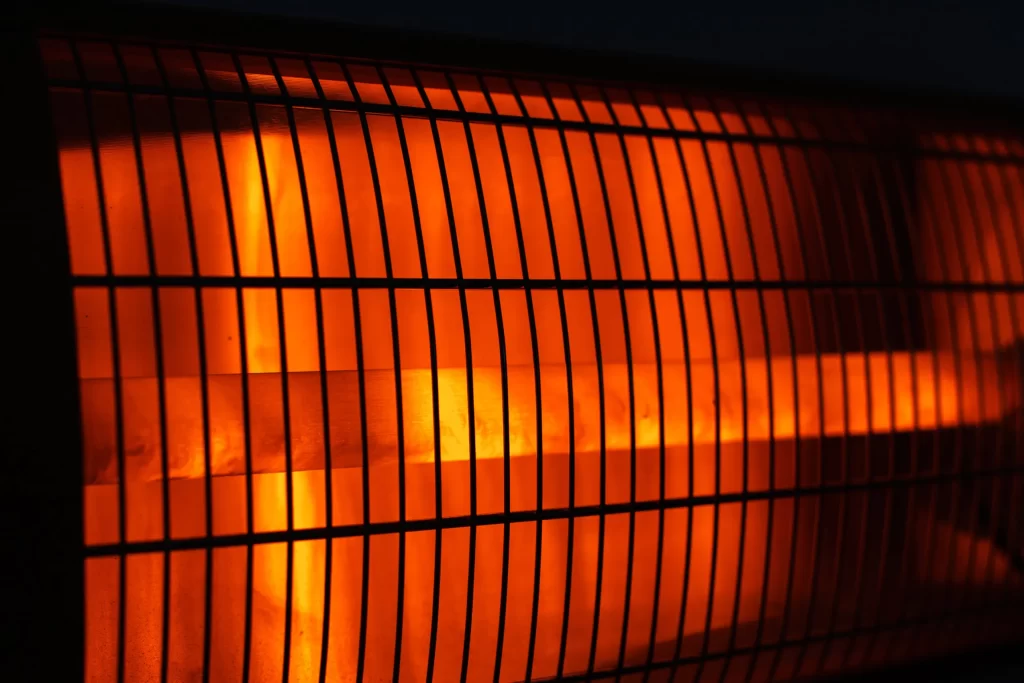
Heating is the second leading cause of residential fires.
Portable heaters are particularly hazardous. If placed too close to flammable items like furniture, bedding, or curtains, they can cause a fire. Some fires also start when portable heaters are left on overnight or when the home is unoccupied.
Fireplaces can lead to fires when embers or sparks jump out and land on flammable material. An unclean chimney can also catch fire due to creosote buildup.
Prevent heating-related fires: maintain at least a three-foot clearance between heating equipment and anything that can burn. Always turn portable heaters off when leaving the room or going to bed. Regularly clean and maintain your heating equipment, including an annual inspection of your central heating system and Chimney. For fireplaces, ensure you use a glass or metal fire screen to catch sparks and rolling logs.
Electrical Fires:
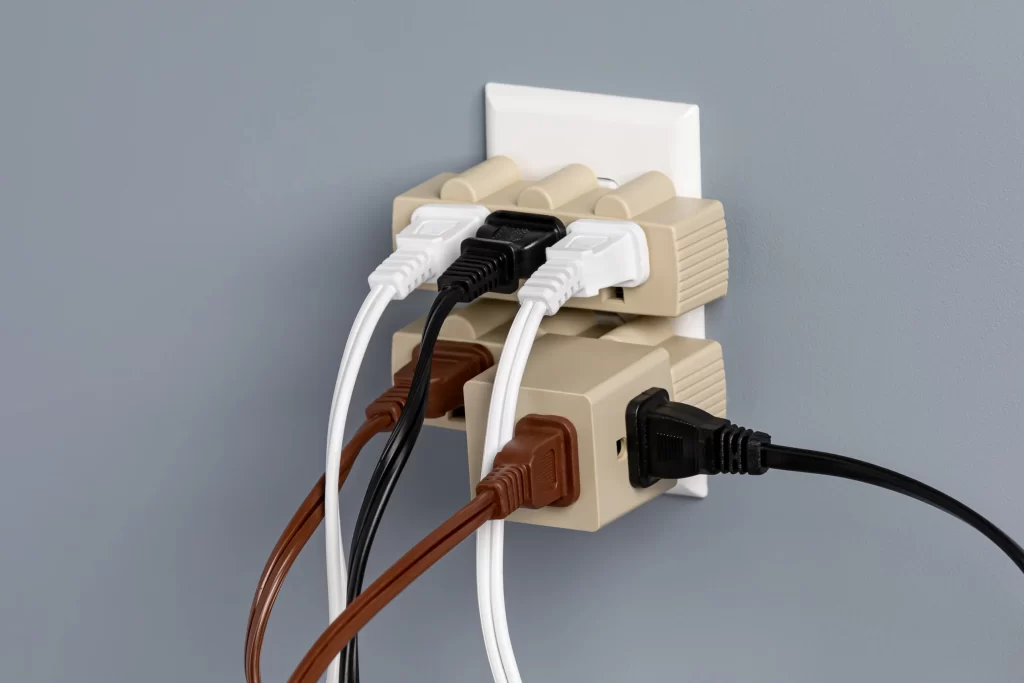
Electrical fires rank high among the causes of house fires. They usually start due to faulty electrical outlets, outdated wiring systems, or overloaded circuits and extension cords.
Older homes, in particular, can be at risk due to inadequate wiring. An electrical system that is not designed to handle the modern-day load can overheat and spark a fire. Similarly, misuse of extension cords, such as overloading them or running them under rugs where they can wear and heat up, can lead to fires.
Faulty appliances or incorrect use of appliances can also cause electrical fires. For instance, an appliance with a frayed cord can send heat onto combustible surfaces like floors, curtains, and rugs that can ignite.
Prevention of electrical fires: involves regular inspection of your home’s electrical system, particularly if it’s an older home. Consider updating your electrical system to meet modern safety standards.
Also remember that your dryer should always be cleaned out of all the lint in the lint trap. Regularly inspect the dryer exhaust hose for accumulation of lint that could cause a blockage and another source of ignition.
For peace of mind you could hire a qualified electrician to ensure your home can handle the electrical load you need. Consider unplugging devices when not in use and unplugging appliances if leaving the home for long periods of time, like a vacation.
Smoking Fires:

Smoking materials, including cigarettes, are a significant fire risk. An unattended, smoldering cigarette can easily ignite nearby flammable materials such as upholstery, curtains, or paper waste. Tragically, these fires often occur at night when occupants are asleep, leading to a high potential for injury or loss of life.
Prevention of smoking-related fires: It’s rather straightforward: never smoke indoors. By moving this activity outside, you eliminate the risk of flammable household items coming into contact with a lit cigarette. However, if you must smoke indoors, ensure you are in a well-ventilated area away from flammable objects.
Use deep, sturdy ashtrays and douse cigarette butts with water before discarding them to fully extinguish any embers. Moreover, never smoke in a home where medical oxygen is in use, as this greatly increases the risk of highly flammable oxygen catching fire.
Candle Fires:

Candles may set a relaxing mood, but they also pose a fire risk. The open flame of a candle can easily catch onto flammable items such as curtains, books, or furniture if left unattended. Moreover, pets and children can accidentally knock over candles, leading to a fire.
Prevention candle fires: Never leave a burning candle unattended and always extinguish candles before leaving a room or going to bed. Use candle holders that are sturdy, won’t tip over easily, and are made of a material that won’t catch fire. Keep candles at least 12 inches away from anything that can burn and avoid placing candles in windows or near doorways where drafts could potentially bring flammable materials in contact with the flame.
Prevention Devices
Smoke detectors: types, placement, and maintenance

Smoke detectors play a major part of fire safety in the home. There are two main types of smoke detectors: ionization and photoelectric. It is recommended to have both types installed in your home for maximum protection.
Ionization Smoke Detectors
Ionization smoke detectors use a tiny amount of radioactive material to ionize the air, creating an electric current. When smoke disrupts this current, the alarm sounds. They’re cost-effective and respond quickly to high-energy, flaming fires, though they may give false alarms and are less effective at detecting smoldering fires.
Photoelectric Smoke Detectors
Photoelectric smoke detectors use a light beam and sensor to detect smoke. When smoke enters, it scatters the light, causing it to hit the sensor and trigger the alarm. They excel at detecting slow, smoldering fires and generally produce fewer false alarms. They may be slightly more expensive than ionization detectors.
Dual Sensor Smoke Detectors:
These detectors combine the features of ionization and photoelectric smoke detectors, providing protection against both flaming and smoldering fires.
Smart Smoke Detectors:
These detectors are connected to your home’s Wi-Fi network and will send an alert to your smartphone if the alarm goes off or the batteries are running low. Some models can even tell you which room the fire is in.
Placement of smoke detectors
Smoke rises, so it’s best to install smoke detectors on the ceiling or high up on a wall. They should also be installed in every bedroom and outside each sleeping area. Avoid placing them too close to windows or doors, as drafts can affect their performance.
Maintaining smoke detectors is just as important as proper installation and placement. Test them once a month by pressing the test button, replace the batteries twice a year (a good reminder is when daylight saving time begins and ends), and replace the entire detector every 10 years.
Fire extinguishers: types, placement, and use
Having a fire extinguisher in your home can mean the difference between minor damage and major destruction or even loss of life. make them part of your home fire safety plan.
There are five classes of fire extinguishers:
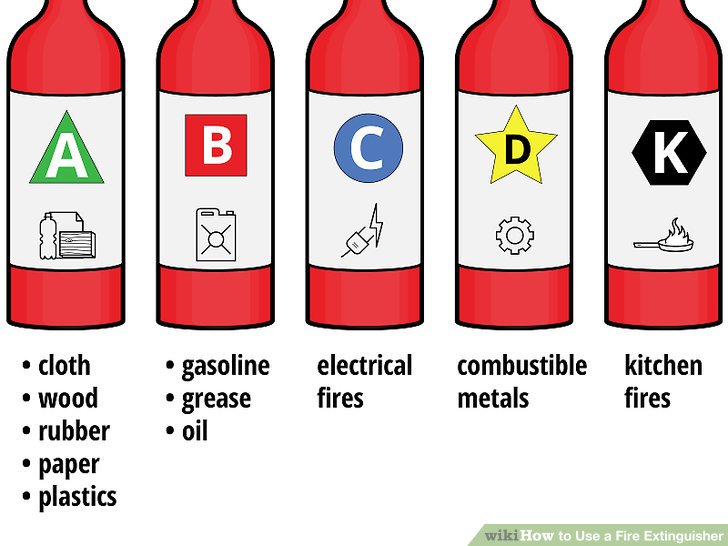
A (for ordinary combustibles such as wood or paper)
B (for flammable liquids such as gasoline)
C (for electrical fires)
D (for flammable metals)
K (For vegetable oils, animal oils and fats in cooking appliances) *Often found in commercial kitchens (restaurants, cafeterias, catering businesses)
It’s recommended to have multiple ABC multipurpose fire extinguisher in your home. Extinguishers should be placed where they are readily accessible in the event of a fire, which typically includes normal paths of travel.where it won’t be blocked by furniture or other objects. If visual obstructions cannot be avoided, then arrows, lights, or signs are needed to help indicate where a fire extinguisher is located.
Make sure everyone knows how to use one by following the “PASS” method:
– Pull out the pin
– Aim at the base of the fire
– Squeeze the handle
– Sweep from side to side
*Fire extinguishers should only be used on small fires and should never be used if the fire is too large, spreading quickly, or if it’s blocking your way out of the house. In those situations, exit the building then call 911 immediately.
Fire Sprinklers:
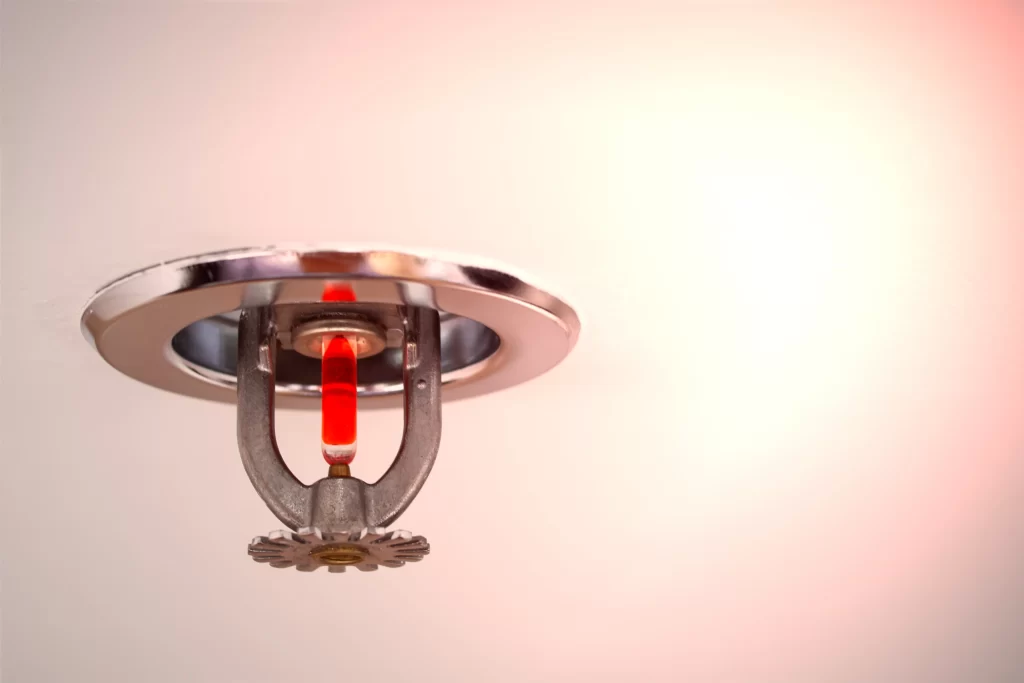
The Power of Fire Sprinklers: Capable of detecting and suppressing fires automatically. Comprising a network of strategically placed pipes, valves, and sprinkler heads, these systems are designed to react swiftly to fire incidents. They buy valuable time for occupants to evacuate safely
Rapid Response and Targeted Suppression: Activated individually by heat, fire sprinkler heads are triggered only in areas affected by the fire. Contrary to popular belief, sprinklers do not all activate simultaneously. Upon activation, sprinkler heads discharge water or fire-suppressing agents onto the flames, reducing the fire’s intensity and limiting its spread.
Their proactive nature ensures fire suppression, even when buildings are unoccupied or occupants are unaware of the danger.
Minimizing Damage and Aiding Firefighters: By containing a fire until the arrival of firefighters, fire sprinklers significantly reduce property damage. The water’s cooling effect helps prevent reignition and diminishes smoke production, facilitating safer conditions for both occupants and emergency responders.
Preparedness
Creating a fire escape plan with all household members
Part of a home fire safety plan is being prepared in case of a fire by creating a fire escape plan with all household members.
Each family member should be involved in the process so everyone knows what to do if there is a fire. When creating an escape plan, it’s important to consider any special needs or limitations someone in your household may have.
For example, if someone has mobility issues and cannot use stairs, they need to be on the first floor or have another way out. If you have young children, assign an adult to assist them during the escape.
Identifying two exits from each room
Identify at least two exits from every room in your home. This may be more challenging in rooms located on higher floors, but it’s critical to find safe ways out.
Some common ways to exit a higher level include using a window ladder or having access to an outdoor staircase. It’s crucial that everyone understands how these exits work and that they practice using them.
Practicing the escape plan regularly
Once you’ve created an escape plan with all family members and identified two exits from each room, it’s time to put this plan into action by practicing regularly. This means running through different scenarios at different times of day and testing out your chosen escape routes.
During these drills, make sure that everyone is aware of where they should be going and who they will help along the way. If there are any issues or problems that come up during these drills, take note of them so that you can address them before a real emergency occurs.
Choosing a meeting place outside of the home

After you’ve identified all possible exits and created an escape plan, ensure that everyone in your household knows where to meet up outside of the home. This designated meeting place should be a safe distance away from the house and somewhere that everyone can easily identify.
Some common choices for a meeting place include a neighbor’s house, a tree or landmark nearby, or even a street sign. The key is to choose somewhere that is easily accessible, visible, and safe from any potential hazards.
Make sure everyone knows exactly where this spot is and practices getting there during drills. In case anyone is missing after an evacuation, quickly inform firefighters who arrive on location.
By following these simple steps of preparedness for fire safety in the home, you can ensure your family’s safety in case of an emergency. Remember: preparation is key!
Small details that make a big difference
Closing doors before going to bed or leaving the house to slow down fire spread
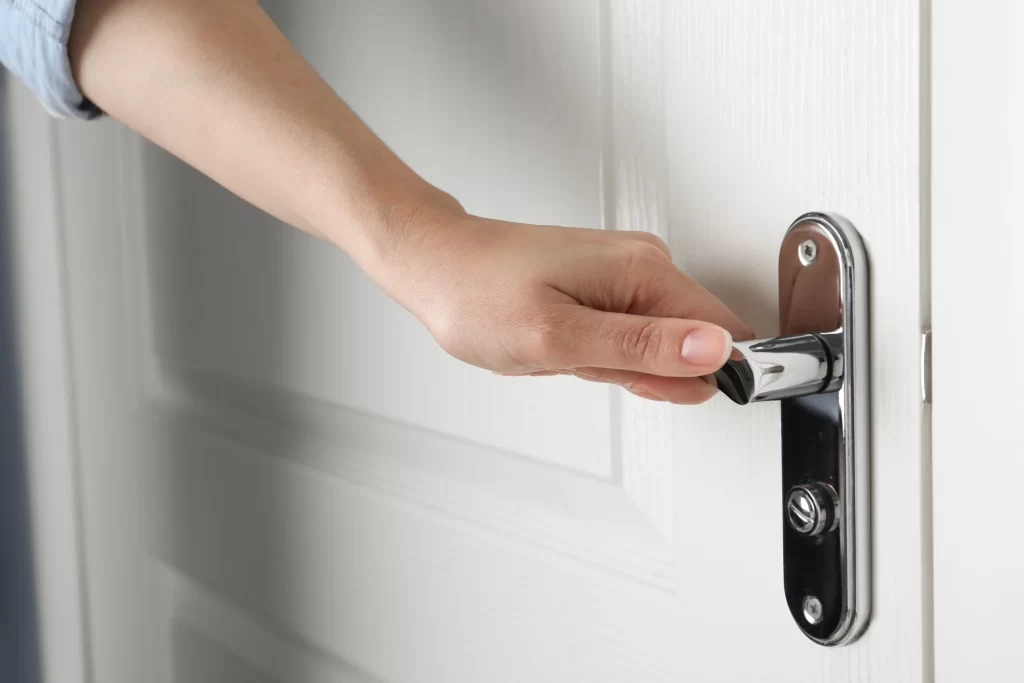
One of the most effective ways to slow down the spread of a fire is by closing doors. When a door is closed, it can help keep smoke and flames contained and reduce the amount of oxygen available to the fire, which can help slow down the fire’s growth. This is important when going to bed or leaving the home because a closed door can stop flames from following you or your family as you try to escape.
It’s also good practice to close all interior doors, including closets and bathrooms, before evacuating. It’s crucial to teach everyone in your household about this simple but effective measure.
Ensure that every person in your home understands why it is essential to close doors during an emergency and how it can save their lives. Consider practicing with them so that they become familiar with closing doors while escaping during an emergency.
A Reminder That Being Prepared Can Save Lives

Home fire safety is not something to take lightly; even small fires can be deadly if not managed properly. By following these best practices for prevention, preparedness, and attention to detail, you can significantly reduce your risk of experiencing a major fire at home.
It is also important to remember that being prepared for emergencies can save lives. In the event of a fire, quick thinking and action could mean the difference between life and death.
Creating an escape plan with your loved ones might seem like an inconvenience now but could end up saving their lives later on. By taking steps towards improving your home fire safety plan today, you are investing in peace of mind for yourself and your family tomorrow – knowing you’re well-prepared if disaster strikes.




I was excited to uncover this web site. I want to to thank you for your time for this wonderful read!! I definitely appreciated every bit of it and I have you book-marked to look at new things in your site.
Thanks everyone, glad it was useful. I tried to pull as much information together so it’s all in one place.
I like what you guys tend to be up too. This type of
clever work and reporting! Keep up the awesome works guys I’ve added
you guys to our blogroll.
Great article! We will be linking to this particularly great content on our site.
Keep up the good writing.
Great article. I’m going through many of these issues as well..
My blog: omnihack